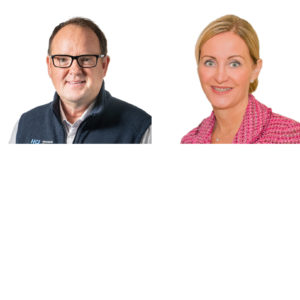Does looking clean really mean clean?
At a glance…
The long-term care industry is realizing the first priority of cleaning is not for appearance, it is for health’s sake. This “hygienic cleaning” approach is the removal of unwanted matter, including potentially harmful microorganisms. ATP bioluminescence monitoring system is a new technology that can measure microorganisms left after cleaning.
The professional cleaning industry has undergone some rather dramatic changes during the past five to 10 years. Among these changes-and the most obvious to the general public-is the adoption of environmentally responsible cleaning methods and products.
However, in recent years, an even more significant change has occurred that has received somewhat less attention: The cleaning industry has come to realize that the purpose of cleaning is to protect health first, rather than cleaning only for appearance sake.
A new and important concept has arisen from this innovative philosophy: hygienic cleaning. This term refers to the use and adoption of cleaning systems, procedures, technologies, and processes that promote or preserve human health through the removal of unwanted matter, including potentially harmful microorganisms.
But the industry soon realized that this term requires that the effectiveness of cleaning be proven scientifically. Cleaning professionals need to be able to prove that a surface not only looks clean but is also free of pathogens that can be a threat to human health. This is why a mature technology-ATP (adenosine triphosphate) bioluminescence monitoring systems-has found a new and key role in the cleaning industry and this technology is now spreading to the healthcare and long-term care industries as well.
White light/red flag
ATP is present in all organic material and it is the universal unit of energy used in all living cells. ATP is produced and/or broken down in metabolic processes in all living systems. Processes such as photosynthesis in plants, muscle contraction in humans, respiration in fungi, and fermentation in yeast are all driven by ATP. Therefore, most foods and microbial cells will contain some level of naturally occurring ATP.
When present, ATP releases white light; the quantity of light generated is directly proportional to the amount of ATP present on a given surface. By measuring the light generated by ATP and comparing it to the amount of ATP-generated light associated with certain microorganisms, a reasonable assumption can be made as to the number of microorganisms present on a specific surface.
A “high glow” white light is considered a red flag that pathogens and other microorganisms that have the potential to negatively impact human health are present in high numbers. Technologies were developed during the early 1970s that measure this ATP-generated white light, making it possible to prove that a surface is, in fact, hygienically clean.
Enabler
The discovery of ATP and the development of technologies to detect it would eventually become the foundation or enabler of hygienic cleaning; however, specific challenges had to be overcome to make this possible. Early ATP monitoring systems were usually large and expensive computers specifically designed to detect ATP, and these computers were stored in only a handful of laboratories.
Also, a trained technician was usually required to retrieve samples from surfaces that were then tested for ATP. The systems tended to be slow, at least by today’s standards; results were generally not available for two to four days. And the entire testing process could be costly. Due to these constraints, the use of early ATP-monitoring technology was often limited to emergency situations and locations such as clean rooms and labs, where the need for a sterile environment is paramount.
Fast, economical
Like almost all computer-related products, ATP monitoring systems have become smaller and less expensive. Today they are referred to as “rapid” monitoring systems; in fact, some of them can detect the presence of ATP in less than 15 seconds. What’s more, most of these units can now be used by virtually anyone; all the user has to do is swab the surface to be tested and place the swab into the ATP-monitoring device. The devices themselves are also much smaller now (about the size of a television remote control), and costs have come down dramatically as well.
Because of these improvements, ATP monitoring systems are now used in a wide variety of settings, from grocery stores and schools to hospitals and nursing homes. Managers and housekeeping personnel now have the ability to scientifically prove that a surface is clean and to take steps quickly to eradicate any problems and protect human health.
ATP monitoring systems have also given the Cleaning Industry Research Institute, independent laboratories, and housekeeping crews the opportunity to actually experiment with varying cleaning products and methods in order to prove which are most effective. For example, in one test, desktops with an ATP measurement level of approximately 4,000 were cleaned using microfiber cleaning cloths and properly diluted cleaning chemicals. Another set of desks was cleaned using a new technology, flat surface cleaning system. Surfaces cleaned with the microfiber and cleaning chemical had an ATP reading of 271, while surfaces cleaned with the flat surface cleaning system had an ATP reading of 9, a 99% reduction.
From dream to reality
The hygienic cleaning movement would have been only a pipe dream without the development of ATP rapid monitoring systems. Cleaning professionals can now prove that a surface is clean, not because it looks clean, but through scientifically measureable data. And perhaps more importantly, they can take immediate action to address areas that need more effective, hygienic cleaning in order to protect human health.
Matt Morrison is communications director for Kaivac, developers of the No-Touch Cleaning system.
For more information, visit https://www.kaivac.com. To send your comments to the editor, please e-mail mhrehocik@iadvanceseniorcare.com
Long-Term Living 2010 April;59(4):24-25
I Advance Senior Care is the industry-leading source for practical, in-depth, business-building, and resident care information for owners, executives, administrators, and directors of nursing at assisted living communities, skilled nursing facilities, post-acute facilities, and continuing care retirement communities. The I Advance Senior Care editorial team and industry experts provide market analysis, strategic direction, policy commentary, clinical best-practices, business management, and technology breakthroughs.
I Advance Senior Care is part of the Institute for the Advancement of Senior Care and published by Plain-English Health Care.
Related Articles
Topics: Articles , Operations











